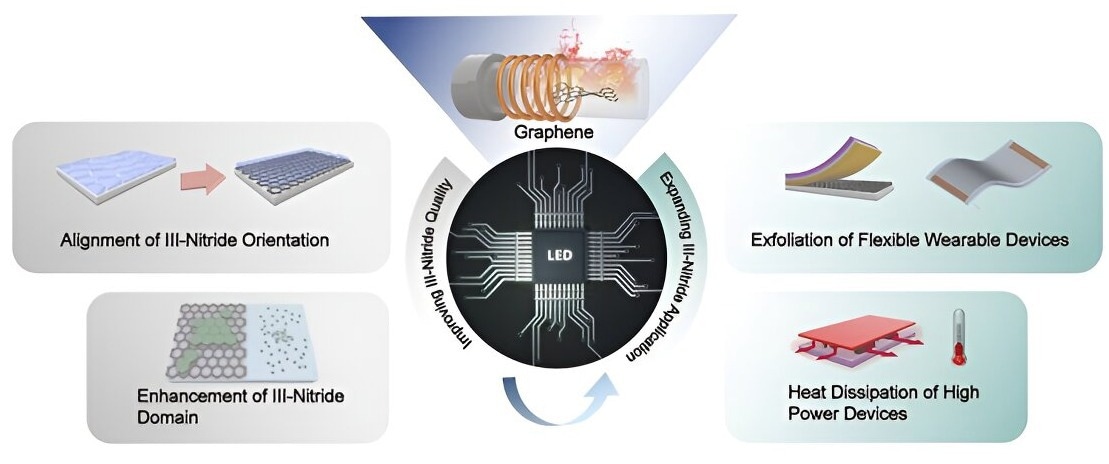Researchers from Xiamen Silan Advanced Compound Semiconductor Co., Ltd., Beijing Graphene Institute, and Soochow University have worked together to provide a thorough review that presents a methodical overview of the development and possible uses of graphene as a buffer layer for nitride epitaxial growth.
 Application of transfer-free graphene on insulating substrates for III-nitride epitaxy. Image Credit: Science China Press
Application of transfer-free graphene on insulating substrates for III-nitride epitaxy. Image Credit: Science China Press
The paper combines viewpoints from academic institutions, research centers, and experts in the semiconductor business to provide solutions for significant issues in semiconductor technology.
The remarkable electrical and mechanical characteristics of graphene, a two-dimensional material, have attracted a lot of attention because of its potential application in the development of nitride semiconductors.
Although there have been significant developments in the creation of graphene using chemical vapor deposition (CVD) on a variety of insulating substrates, the production of high-quality graphene and attaining ideal interface compatibility with Group III-nitride materials continue to be significant obstacles in the sector.
The review offers a detailed examination of the most recent developments in transfer-free graphene growth as well as the obstacles in transferred graphene manufacturing methods. The development of transfer-free graphene on various insulating substrates and its possible uses in nitride epitaxy are also covered.
The study also highlights the obstacles that need to be removed to fully realize the promise of transfer-free graphene-growing technology in the nitride epitaxy field. The review, which encourages more study in the field, acts as a technical and application guide for employing graphene in nitride epitaxial growth through a detailed analysis of the body of current literature.
This review not only directs future research directions and technical breakthroughs in the field of nitride epitaxial growth, but it also provides practitioners and researchers with useful information.
Journal Reference:
Gao, X., et. al. (2023) Transfer-free chemical vapor deposition graphene for nitride epitaxy: challenges, current status and future outlook. Science China Chemistry. doi:10.1007/s11426-023-1769-y.